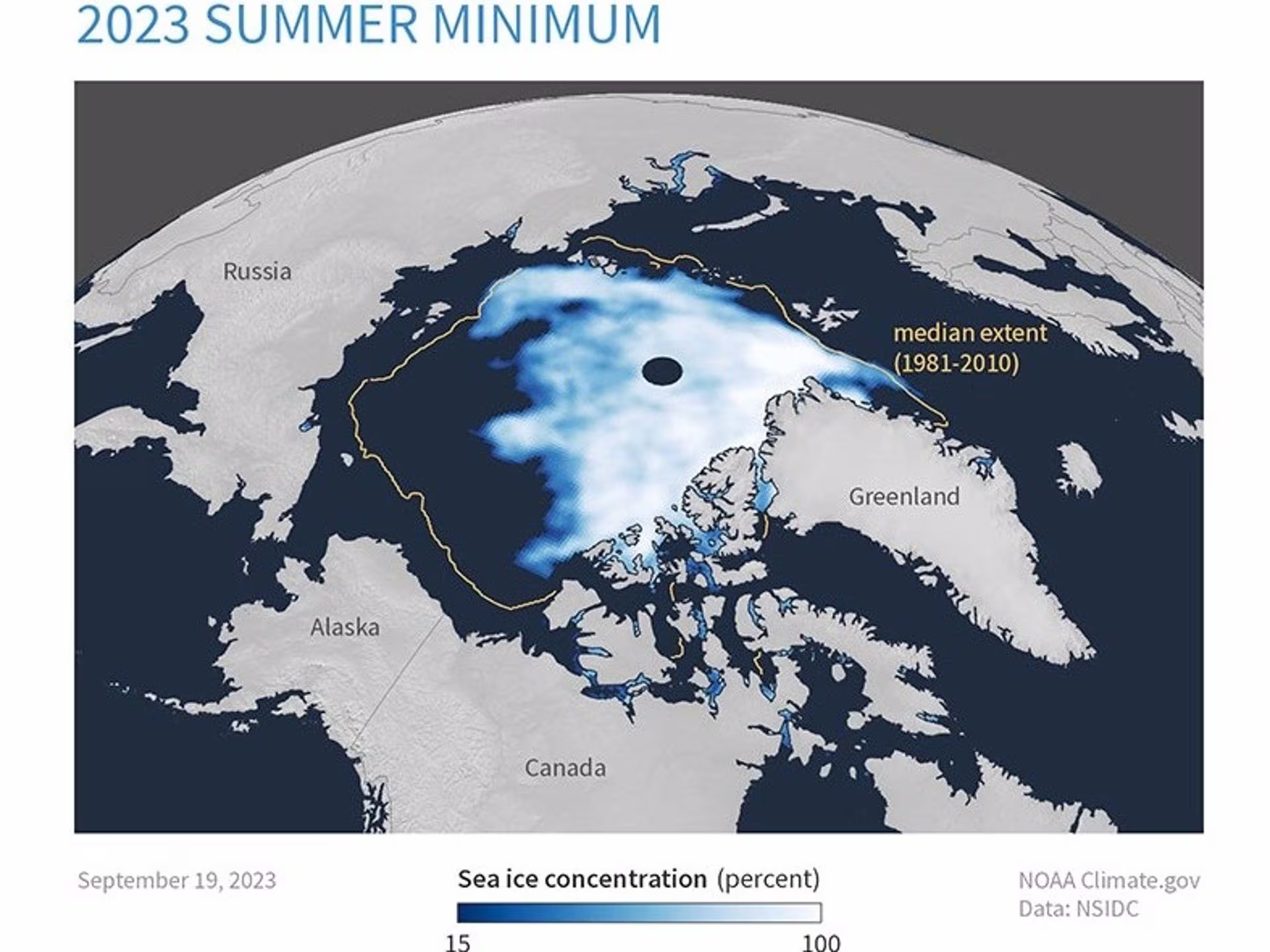A recent study published in Nature Communications Earth and Environment suggests a possible reason for the underestimation of the decrease in Arctic sea ice and the formation of cyclones in the Arctic.
Led by Steven Cavallo, a professor at the School of Meteorology at the University of Oklahoma, this research could lead to more accurate meteorological and climatic models and improve cyclone prediction in the Arctic.
Since 1979, the extent of Arctic sea ice, which describes the portion of the Arctic Ocean covered with ice, has decreased by 40% during the late summer months. Global climate models have consistently underestimated this reduction.
The study examines what Cavallo and his co-authors refer to as “very rapid ice loss events” or VRILE. The decrease in sea ice since 1979 is the result of numerous VRILE events that occur individually over periods of 5 to 18 days.
Cavallo suggests that Arctic cyclones are at least partially responsible. Arctic cyclones are meteorological phenomena that are difficult to predict and incorporate into models. Although the exact mechanisms by which these cyclones can accelerate ice loss are not fully understood, Cavallo proposes two theories. The first is the interaction of turbulent seas with the ice.
Theories and challenges in predicting ice melt
“If the winds are strong and the ice is thin enough, [the cyclone] can create waves that break up larger ice floes. By breaking them into smaller floes, melting is accelerated; this can occur in a very short time frame,” he said in a statement.
The second theory is that upwelling, the mixing of warmer water beneath the sea surface with colder surface waters, raises temperatures that help melt the ice from below in a short period of time.
Observing these events and their effects is complicated. Ships avoid predicted storms, and an aircraft could not fly into an Arctic cyclone close enough to the ocean surface to gather data on upwelling or interactions between waves and ice.
Cavallo points out that they have found that cyclones must be in the right place to make a significant difference in sea ice extent. They must occur over an area of thin ice that generally does not have more than a year’s worth of ice.
The research also suggests a connection between Arctic cyclones and polar vortices in the tropopause, or the circulation in the upper troposphere over polar regions.

Impact and future of predictions
Cavallo noted that polar vortices in the tropopause are sometimes present for months before an Arctic cyclone forms, while Arctic cyclones are generally only predicted several days in advance.
Because vortices are present long before a cyclone, they could lead to better cyclone forecasts. This would benefit residents in areas such as Alaska, northern Canada, and Greenland, and help the shipping industry, which has increased its use of the Arctic as ice continues to decrease.
“Now that we believe these processes are occurring, the question is how to introduce that information into models for better predictions,” Cavallo said. “It’s a challenging task.”
Cavallo emphasized that the scientific community as a whole is still unsure when the Arctic will be ice-free. This imminent ice loss could significantly affect large-scale atmospheric dynamics across the northern hemisphere.
“We are still trying to figure out exactly how changes in sea ice will affect the extreme weather events that are currently happening,” he concluded.
What are the consequences of Arctic ice melt?
In some areas, ice melt will endanger sources of drinking water. In others, it will affect agriculture or aquaculture.
Coastal areas will continue to experience significant flooding due to rising sea levels. And for the millions of people living in permafrost areas, the costs of repairing deteriorating infrastructure will accumulate.
Arctic ice and permafrost (permanently frozen soil) store large amounts of methane, a greenhouse gas that contributes to climate change.
When it thaws, it releases methane, increasing the rate of warming. This, in turn, causes more ice and permafrost to thaw or melt, releasing more methane, leading to further melting.
As more ice is lost more rapidly and we see permafrost melting faster, we will begin to see the worst predictions about climate change come true.
Do you already know our YouTube channel? Subscribe!

